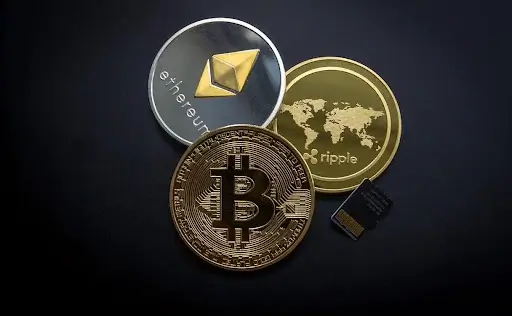6 Little Known Altcoins That You Should Know About
Many people interested in digital currencies are familiar with Bitcoin and perhaps Ethereum. These are undoubtedly the most established names in the cryptocurrency space. However, beyond these well-known assets lies a vast landscape of alternative digital coins, often referred to as ‘altcoins’. There are thousands of them, each with different goals, technologies, and potential uses.

While concentrating on the major cryptocurrencies is a common strategy, some investors explore lesser-known altcoins. The reasoning? Smaller, newer projects sometimes present opportunities for significant growth if they succeed, potentially offering higher returns compared to more established coins (though this typically comes with substantially higher risks). Identifying a promising project in its early stages can be rewarding, but it requires careful consideration. Let’s explore six lesser-known altcoins that are generating interest for various innovative reasons.
1. Kaspa (KAS)
Kaspa aims to improve upon Bitcoin’s model by offering faster transaction speeds. It utilises a technology called blockDAG (a variation of blockchain) which allows for parallel block processing. This structure enables it to confirm transactions much more quickly than many older blockchains. Kaspa is notable for its launch method, which involved no pre-mining or initial coin allocations to the development team, aiming for a fairer distribution from the outset. Check out our comprehensive article on Cryptocurrency Exchange Development for additional information.
2. Render (RNDR)
Render targets the market for high-performance computing, specifically graphics rendering. It functions as a distributed network connecting individuals or entities needing significant GPU (Graphics Processing Unit) power – such as digital artists, animation studios, or AI developers – with those who have spare computing capacity. Users can effectively rent out their idle GPUs to the network and earn RNDR tokens in return. It facilitates access to rendering power required for complex digital graphics and emerging AI applications.
3. Fetch.ai (FET)
As artificial intelligence (AI) continues to expand rapidly, Fetch.ai seeks to integrate AI capabilities with blockchain technology. The project focuses on building a decentralised network where ‘autonomous economic agents’ – essentially intelligent software programs – can interact and perform tasks automatically. Examples include optimising travel arrangements, managing energy consumption in smart grids, or facilitating complex data analysis. It’s building infrastructure for a decentralised machine-learning ecosystem. Enhance your understanding by reading our in-depth post on Analyzing Stock Valuation.
4. Injective (INJ)
Injective is a blockchain specifically engineered for financial applications, particularly within the realm of decentralised finance (DeFi). Its design prioritises high transaction speeds and aims to eliminate gas fees for end-users interacting with applications built on its network. This makes it attractive for developing decentralised exchanges (DEXs), derivatives platforms, prediction markets, and other financial tools that require efficiency and low costs. When navigating crypto markets, individuals use different methods; some purchase coins directly, while others might use brokerage services like easyMarkets, which offer instruments like CFDs linked to crypto prices alongside traditional assets like Forex and shares, presenting alternative ways to gain exposure to price movements.
5. Oasis Network (ROSE)
Data privacy is a growing concern in the digital age. The Oasis Network is a layer-1 blockchain designed with privacy at its core, particularly for DeFi and the concept of ‘data tokenisation’. Its architecture allows sensitive data to be utilised in computations (such as training AI models or performing analytics) without exposing the raw, private information itself. This privacy-preserving technology holds potential for sectors like healthcare, finance, and personal data management where confidentiality is paramount. Find valuable tips and strategies in our article about Solana Price is Shaping the Future of Cryptocurrency Investments.
6. VeChain (VET)
VeChain concentrates on applying blockchain technology to solve real-world business problems, with a strong emphasis on supply chain management and product traceability. Businesses can use VeChain’s platform to track goods from origin to consumer, verify authenticity, and improve logistical efficiency. Imagine tracking premium Australian wine or agricultural products through every step of their journey using immutable blockchain records. Companies utilise VET tokens to pay for transactions on the VeChainThor blockchain, linking the token’s use directly to enterprise adoption.
Conducting Your Research
Discovering potentially interesting altcoins is only the initial step. Before considering any investment, thorough due diligence is essential:
- Study the Whitepaper: Understand the project’s objectives, the problem it aims to solve, and the specifics of its technology.
- Investigate the Team: Research the individuals behind the project. What is their background and experience? Are they transparent?
- Analyse Tokenomics: Examine the coin’s supply (total and circulating), its distribution model, and its utility within the ecosystem. What drives demand for the token?
- Evaluate Market Data: Look at the market capitalisation, trading volume, and historical price action. Where is the token listed?
- Engage with the Community: Explore the project’s official communication channels (like X, Discord, Telegram). Assess the activity level, the nature of discussions, and the responsiveness of the team.
The altcoin market is dynamic, innovative, and complex. While the allure of finding the ‘next big thing’ exists, the associated risks cannot be overstated. The coins mentioned here represent just a small sample of the diverse projects operating in the space. Always approach cryptocurrency investments with caution, prioritise comprehensive research, understand the risks fully, and never invest funds you cannot afford to lose. Careful exploration and continuous learning are key in navigating the evolving world of digital assets. You can visit Fintechzoom.com for more trending posts.




